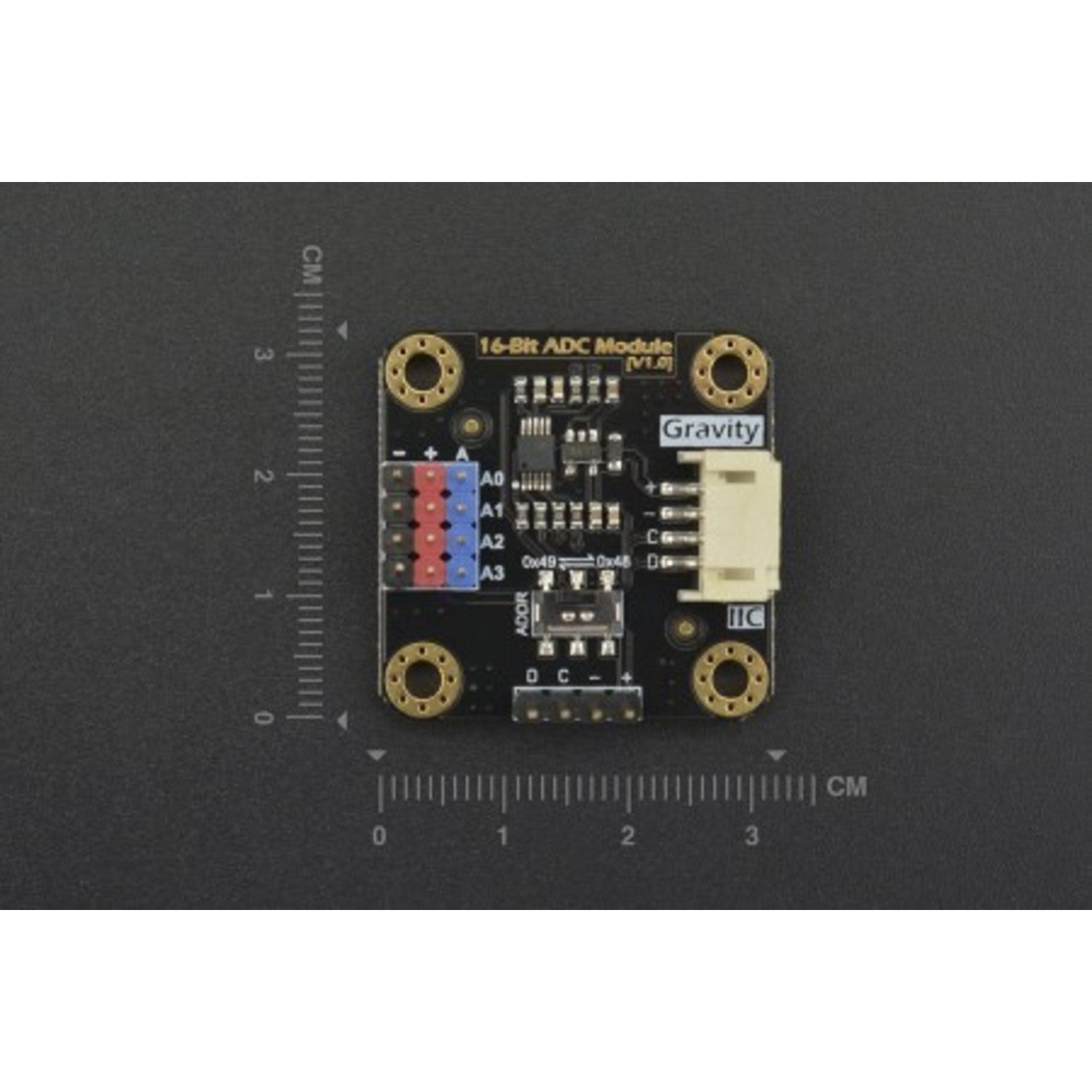The DFRobot I2C ADS1115 16-bit ADC module is a game-changer for accurately collecting and converting analog signals. It makes it a breeze for Raspberry Pi to use a wide array of Gravity series analog sensors to measure various signals and sense the world around. Raspberry Pi is a powerful master control board, but its I/O pins can only read digital signals. With this ADC module, you no longer need to worry about the hassle of external analog-to-digital conversion. It's designed specifically for Raspberry Pi and Gravity series sensors, offering a plug-and-play experience without any welding required. There are numerous Gravity series sensors available, catering to all of Raspberry Pi's sensor needs. This module uses the 16-bit ADC chip ADS1115, supporting a wide 3.3 - 5V voltage power supply. The chip comes with a precision reference voltage and programmable gain adjustment, enabling accurate collection and conversion of both weak and highly variable signals. It's suitable for any application where the main control board needs to precisely collect analog signals. One ADC module can read analog signals from 4 channels. Thanks to the on-board I2C address selection switch, you can cascade two ADC modules to read signals from 8 channels, meeting diverse application requirements. Features include support for 3.3 - 5.0V wide supply voltage, 3.3V I2C digital level signals optimized for Raspberry Pi, a Gravity I2C interface for easy plug-and-play, an on-board I2C address selection switch for module cascade, and color-coded 3-pin headers for seamless connection with Gravity analog sensors. Specifications: Supply Voltage (VCC): 3.3 - 5.0V; Analog Signal Detection Range: 0 - VCC; Number of Analog Channels: 4; ADC Bits: 16 Bit; Operating Current: 2 - 3mA (excluding sensor module); Interface Type: Gravity I2C; Interface Level: High 3.3V, Low 0V; Product Size: 32mm * 32mm (1.26in * 1.26in). Documents include the product wiki and more related materials.





Using this 16-bit Gravity I2C ADS1115 ADC module is easy. First, connect it to your Raspberry Pi or Arduino. Since it has a Gravity I2C interface, it's a simple plug-and-play setup. You don't need to do any welding. Just make sure to connect it properly according to the connection diagrams provided. If you want to read signals from more channels, you can use the on - board I2C address selection switch to cascade two ADC modules. Remember, the voltage on the analog input pins must be less than VCC + 0.3V. This is an important safety measure to avoid damaging the module. When it comes to maintenance, keep the module in a dry and clean place. Avoid exposing it to extreme temperatures or humidity. If you have any further questions, refer to the product wiki or other provided documents for more detailed information.